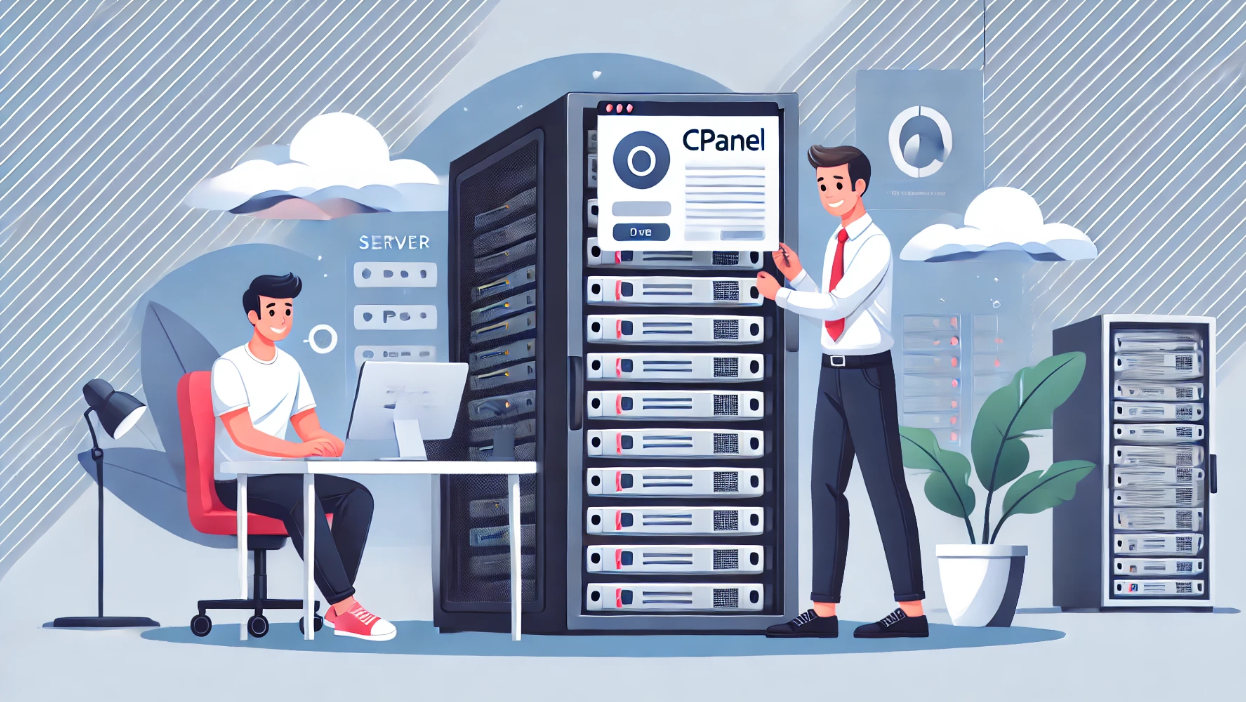How to Install and Configure cPanel on Your VPS (Even If You Have Zero Technical Skills)
Meta Description: Want to use cPanel on your VPS but don’t know how to install or configure it? Learn how to get it done professionally — no coding, no command lines, no stress.
Introduction: You Want cPanel — Not a Linux Degree
You just got your VPS and you’re ready to run your website, host email, or manage domains — and you’ve heard that cPanel is the easiest way to do it.
There’s just one problem:
Installing and configuring cPanel on a VPS typically requires command line access, Linux knowledge, and server admin experience. If you don’t have any of that, it can feel overwhelming — or downright impossible.
Good news: You don’t need to become a sysadmin to use cPanel.
This guide shows you how to get cPanel up and running on your VPS — without touching a terminal or learning any code.
What Is cPanel (and Why Do You Want It?)
cPanel is the most popular web hosting control panel in the world. It lets you:
-
Install WordPress or other apps in a few clicks
-
Create and manage email accounts
-
Set up domains, subdomains, and redirects
-
Monitor bandwidth and server health
-
Manage files and backups from a browser
And the best part? It works with no technical knowledge once installed.
The only tricky part is the initial setup — and we’ll solve that next.
️ Why Installing cPanel Yourself Can Be Risky
Unless you’re comfortable with:
-
Linux commands
-
System dependencies
-
Licensing activation
-
Server firewalls and ports
-
DNS configuration
…you could run into:
-
Broken installations
-
Locked out servers
-
Misconfigured security settings
-
Performance or compatibility issues
That’s why many users with zero technical background choose professional help or automated services to get started with cPanel on their VPS.
✅ How to Get cPanel Installed Without Doing It Yourself
Here are three beginner-friendly options to get cPanel running on your VPS — no command line required:
1. Ask Your Hosting Provider to Preinstall cPanel
Many hosting providers offer:
-
VPS plans with cPanel pre-installed
-
One-click cPanel add-ons during checkout
-
Managed VPS options that come with full setup and support
Benefits:
-
No installation needed
-
cPanel is licensed and ready to use
-
You get full support for setup and usage
Look for:
Plans labeled “VPS with cPanel” or “Fully Managed VPS Hosting”
This is the easiest and most beginner-friendly option.
2. Hire a Server Management Service
If your VPS doesn’t come with cPanel by default, you can hire a professional to:
-
Install cPanel
-
Configure basic settings (DNS, email, backups)
-
Secure your server
-
Hand it over ready-to-use with login credentials
Trusted options:
-
Your VPS provider’s managed service
-
Reputable freelancers (on platforms like Upwork or Fiverr)
-
Server management companies (like AdminGeekZ, SupportMonk, or ServerHealers)
️ This is ideal if you want peace of mind and a professional setup.
3. Use a One-Click Installer (If Available)
Some VPS dashboards (especially from user-friendly providers) include:
-
One-click apps for installing cPanel or similar panels (like Webuzo or CyberPanel)
-
Auto-configuration tools that do most of the setup for you
Example providers that offer this:
-
Hostinger
-
Dedirock
-
InterServer
-
A2 Hosting
-
Kamatera
⚙️ Check your control panel or VPS dashboard for “Applications” or “1-click install” options.
What Happens After It’s Installed?
Once cPanel is ready on your VPS, you can:
-
Log into
your-server-ip:2083with your cPanel credentials -
Use the visual interface to:
-
Upload your website or install WordPress
-
Create email accounts
-
Set up domains and SSL
-
-
Never worry about the terminal again
You’re now in full control of your web hosting environment — no coding required.
Bonus: What to Ask Before You Commit
When choosing a provider or professional, ask:
-
✅ Does the VPS include a valid cPanel license?
-
✅ Will you set up DNS, email, and backups for me?
-
✅ Is technical support included?
-
✅ Will I get a clean and secure environment?
-
✅ Can I manage everything through cPanel once it’s ready?
A good provider or technician should answer “yes” to all of the above.
Final Thoughts: You Don’t Need to Be a Tech Expert to Use cPanel
If you’ve been hesitating to use a VPS because of the technical barrier — now you know the truth:
✅ You can run your own server
✅ You don’t need coding or Linux experience
✅ You just need the right support to get started
With cPanel installed and configured professionally, you get:
-
The freedom of VPS
-
The simplicity of shared hosting
-
The power to grow your online presence
All without writing a single line of code.

